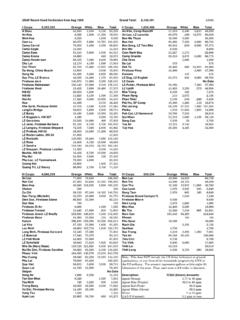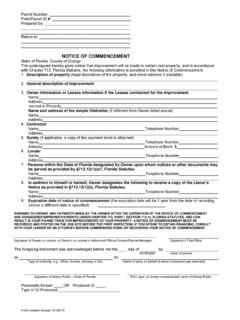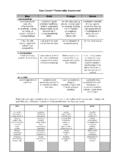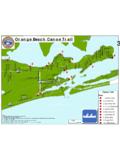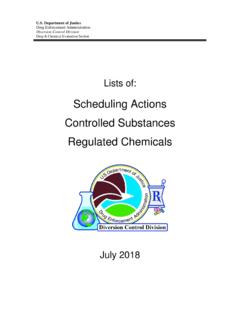Transcription of Frequently Asked Questions About Agent …
1 Frequently Asked Questions About Agent orange /Dioxin Susan Hammond & Charles Bailey War Legacies Project & Ford Foundation What is Agent orange : Agent orange was one of a class of color coded herbicides that forces sprayed over the rural landscape in Vietnam to kill trees, shrubs and food crops over large areas. Agent orange was a 50/50 mixture of two individual herbicides, 2,4 D and 2,4,5 T. It remained toxic over a short period a scale of days or weeks and then The production of Agent orange was halted in the 1970s, existing stocks were destroyed and it is no longer More than 43 million litres (11,360,000 gallons) of Agent orange were used in Vietnam from 1965 1970.
2 In addition more than 30 million litres of Agent White, Blue, Purple, Pink and Green were also What is dioxin: Dioxin is a member of the class of persistent organic pollutants (POPs) which resulted from the deliberately accelerated production of 2,4,5 T, one of the components of Agent The chemical companies that produced the herbicides claimed they were unaware of the dioxin contaminant, however many dispute this claim. Estimates as to the amount of dioxin in the herbicides vary because each manufacturer and each batch of 2,4,5 T had different levels of the dioxin contaminant.
3 Researchers have estimated that anywhere from 130 366 kg of dioxin was dumped in are the health effects of dioxin: Dioxin can shorten the life of humans exposed to it and is associated with severe degradation of health in this and, potentially, future generations. Dioxin is toxic over a long period a scale of many decades and does not degrade readily. Dioxin is not absorbed by plants nor is it water soluble. It can attach to fine soil particles or sediment, which are then carried by water downstream and settle in the bottoms of ponds and lakes.
4 It continues to adversely affect people who eat dioxin contaminated fish, molluscs and fowl produced around a handful of point sources of dioxin called dioxin "hot spots."6 The highest level of dioxin recorded in a human in Vietnam was in a person fishing in the lake on the Da Nang airbase, over 1000 are the environmental effects of Agent orange and the other herbicides: The effects persist in the form of ecologically degraded landscapes in parts of the hilly and mountainous areas of Vietnam. The pre war forests that existed in most of these areas took hundreds of years to reach an ecologically balanced mixture of large numbers of species of flora and fauna.
5 Natural regeneration would take centuries to reproduce those landscapes. In addition, in some of the sprayed areas, soil erosion and landslides have sharply lowered soil nutrient levels and altered the topographical features of the landscape. These changes have encouraged a few species of invasive grasses of low value. Active replanting with species of trees and shrubs which are ecologically viable and have economic value will require substantial and sustained long term What can be done to address dioxin s impacts: Dioxin's continuing impact can be slowed or halted by genetic counselling, cutting the dioxin exposure pathways in the human food chain and by environmental remediation of contaminated sites.
6 The adverse effects of dioxin on human health can be ameliorated in most cases if detected early, but they cannot be fully corrected in some cases by any amount of time or money. If dioxin permanently alters the intricate internal cellular and chemical balances involved in maintaining good human health, there is serious risk of life long health problems which may ultimately lead to When were Agent orange and the other herbicides sprayed in Vietnam: The first testing of the herbicides in Vietnam was conducted in August 1961. The Air Force aerial spraying program, Operation Hades (later renamed Operation Ranch Hand), took place from January 1962 until February 1971 accounting for 95% of the herbicides sprayed.
7 The Chemical Corps and other allied forces sprayed the remaining 5% by helicopters, trucks and hand, mostly around the perimeters of military The government stopped the spraying of all herbicides in October 1971. However the South Vietnamese military continued to spray various herbicides until How much of Vietnam was sprayed: The herbicides were sprayed over About 24% of southern Vietnam. As a result 3,104,000 hectares (5 million acres) of upland and mangrove forests were destroyed and About 500,000 acres of crops were destroyed (an area the size of Massachusetts).
8 Thirty four percent of the regions were sprayed more than once with some of the upland forests sprayed more than four Parts of Laos and Cambodia along the border of Vietnam were also sprayed. What happened to the remaining barrels of herbicides after the spraying ended: Starting in September 1971, in a project called Pacer Ivy, remaining stocks of the dioxin contaminated herbicides in Vietnam were gathered at Da Nang, Bien Hoa and Tuy Hoa airbases. If the barrels were damaged, South Vietnamese military soldiers re barreled the herbicide into new 55 gallon drums.
9 The damaged empty barrels were disposed of in local landfills, whereas the usable barrels were steam cleaned and given to the South Vietnamese Air Force. In April 1972, after the re barreling was finished, approximately 1,387,100 gallons of Agent orange was shipped to Johnston Island in the south pacific. In 1977, 845,000 gallons of dioxin contaminated herbicides stored at the Seabees base in Gulf Port, Miss., were re barreled and shipped to Johnston Island. A total of million liters (2,271,879 gallons) were destroyed in the South Pacific in 1977 on the incinerator ship M/T What diseases has the government found to be associated with the wartime herbicides.
10 In 1991 Congress passed Public Law 102 4 which required the National Academy of Sciences to review the medical and scientific research on the health affects of exposure to the herbicides used during the war in The Institute of Medicine (IOM) reviews the studies on all the individual compounds in the herbicides used and the dioxin contaminant in 2,4,5 T. They issue biennial reports called Veterans and Agent orange . The most recent report was released in July 2009. To date the IOM has found sufficient evidence of association between exposure to the herbicides and soft tissue sarcoma, non Hodgkin s lymphoma, chronic lymphocytic leukemia, Hodgkin s disease and chloracne.

